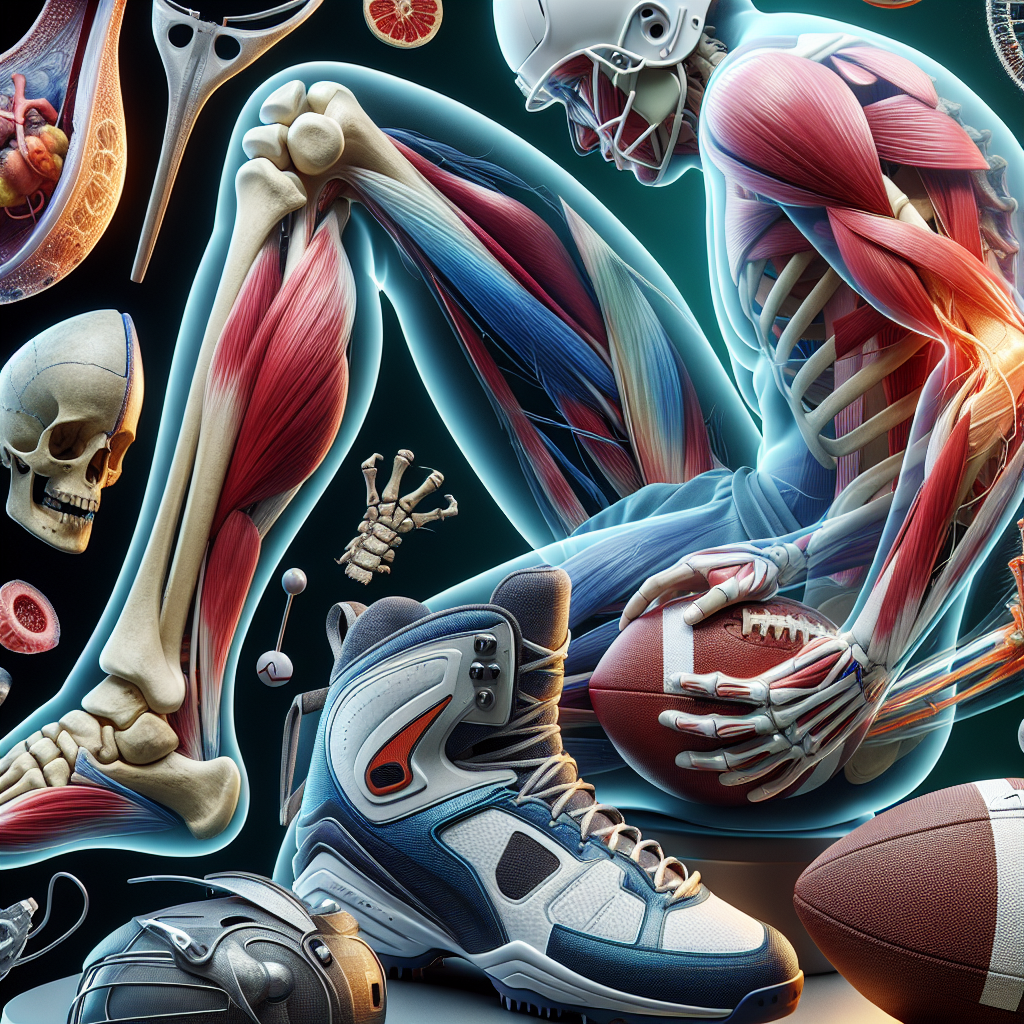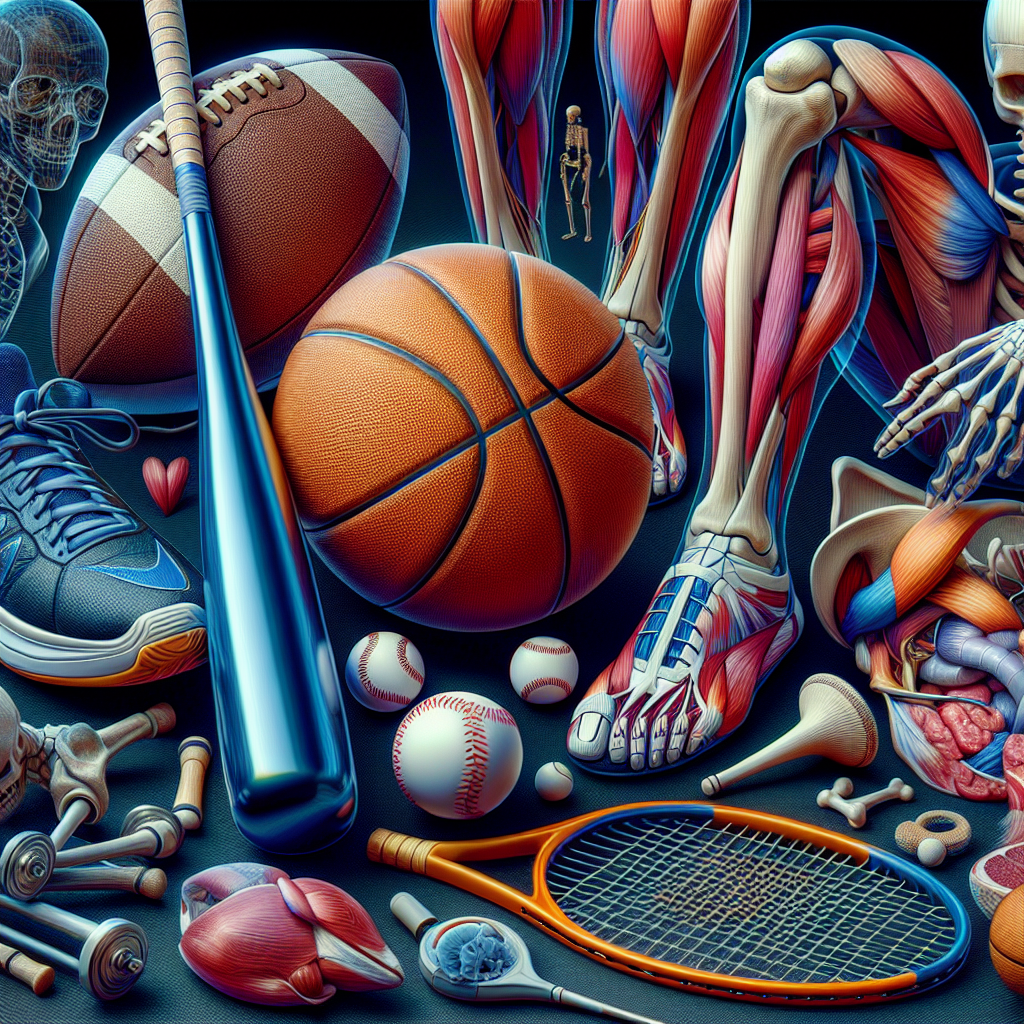
A Guide To Common Injuries In Different Sports At Sports Medicine Houston
Participating in physical activities can lead to a variety of athletic injuries, impacting individuals regardless of their skill level. Each sport presents unique challenges and risks that contribute to specific injuries.
For example, football players often face concussions and issues with their knees, while basketball players frequently struggle with ankle sprains and wrist problems.
Soccer athletes are not immune, as they may endure hamstring pulls, and runners commonly experience shin splints along with plantar fasciitis.
Awareness of these patterns can significantly aid in injury prevention. Seeking appropriate physical therapy is important for recovery, empowering athletes to return to their sport with renewed strength.
Click here to learn more about: sports medicine.html
Understanding Sports Injuries And Their Causes
Injuries pose a considerable threat to athletes, affecting their ability to perform and maintain their health. Physical ailments incurred during athletic activities can vary widely, with many unforeseen occurrences.
Common issues like sprains, fractures, and strains stem from different origins.
Various elements contribute to these problems, including overuse and the application of improper techniques.
Environmental factors, such as the playing surface and weather conditions, can intensify these situations. Inadequate equipment, especially unsuitable footwear, may lead to significant complications.
A thorough examination of these causes enhances the capacity of sports trainers to formulate better prevention strategies, promoting athlete safety and optimal rehabilitation practices.
Transitioning from the previous discussion on injuries faced in different sports, it is essential to examine the key risk factors that may heighten the likelihood of these incidents. Understanding these elements will further equip athletes and professionals in effectively navigating rehabilitation processes, working alongside sports trainers and orthopedic specialists, and managing conditions such as concussion and tendonitis.

Key Risk Factors For Athletic Injuries
Athletic performance inherently involves various challenges, and injuries are a common consequence. Physical conditioning is a key factor, as athletes with lower fitness levels may experience muscle strains more frequently than those who are better trained.
Tailored training programs can help reduce the likelihood of such injuries across different sports.
Equipment and the surrounding environment also play significant roles.
Proper gear can effectively minimize sprains and fractures, while the type of playing surface and weather conditions can further influence safety during activities. Addressing these risk factors is important for effective injury prevention.
Transitioning to recovery, the role of sports medicine becomes increasingly important in addressing the aftermath of athletic injuries
Athletic Performance and Injury Prevention
- Athletes with higher levels of physical conditioning are less likely to suffer from muscle strains.
- Tailored training programs can reduce injury risk by addressing specific needs of different sports.
- Using proper gear can significantly lower the chances of sprains and fractures during athletic activities.
- The type of playing surface and weather conditions can impact athlete safety and injury occurrence.
The Role Of Sports Medicine In Recovery
Recovery after athletic events requires careful attention to various physiological aspects. The field of sports medicine plays a pivotal role in guiding athletes through their recovery journeys, ensuring they regain strength and functionality.
This specialized discipline goes beyond treating acute injuries; it encompasses exercise physiology, tailored rehabilitation programs, and nutritional support to address each athlete’s unique needs.
During recovery, professionals closely monitor progress, adjusting techniques as necessary.
By integrating aspects of kinesiology and biomechanics, practitioners not only aid in healing but also enhance overall athletic performance, paving the way for a safer return to competition. Transitioning from recognizing key risk factors for athletic injuries to implementing effective injury prevention strategies is crucial in maintaining athlete health.
Essential Injury Prevention Strategies For Athletes
Athletes are often faced with the innate risks associated with high-level competition, making it paramount to adopt strategies that effectively minimize the chance of injuries. Comprehensive warm-up and cool-down routines are foundational for optimizing performance and preventing chronic injuries.
Incorporating dynamic stretching and mobility exercises can prepare muscles effectively.
Gradually increasing intensity allows athletes to ease into their exertion, minimizing strain on joints.
The implementation of sport-specific training and technique is another significant aspect of injury prevention.
Proper form is paramount to reducing the risk of injury, and drills replicating actual game scenarios help athletes develop skills while ensuring their bodies are ready for the demands ahead. Regular injury assessments serve a dual purpose, allowing athletes to identify potential problems and implement recovery strategies that address weaknesses. Transitioning to rehabilitation, effective injury assessment and recovery strategies informed by sports science can significantly enhance pain management for individuals with chronic injuries.
Injury Prevention in Athletics
- Research indicates that athletes who engage in comprehensive warm-up routines reduce their risk of injury by up to 50%.
- Dynamic stretching has been shown to improve flexibility and range of motion, which are crucial for performance and injury prevention.
- Studies reveal that athletes practicing sport-specific training techniques experience fewer injuries compared to those who do not.
- Regular injury assessments can lead to early detection of potential issues, allowing for timely intervention and recovery strategies.
Effective Rehabilitation Techniques For Injured Athletes
Experiencing an injury can be a significant hurdle for athletes, making a structured recovery plan imperative for regaining peak condition. A focus on tailored warmup routines allows for gradual recovery while promoting overall healing.
Each individual’s experience is distinct, necessitating specific modifications based on the nature and severity of their injuries.
Employing effective cooldown techniques helps mitigate the risk of re-injury and improves joint mobility.
Frequent assessments are key, ensuring rehabilitation strategies adapt alongside the athlete’s progress, which is essential for enhancing athletic performance and building resilience against future impact injuries.
How Sports Trainers Assess Injuries
Effective injury assessment holds immense significance for athletes aiming for a swift return to competition. Initially, trainers conduct a thorough evaluation, where the athlete’s prior injury history is meticulously gathered.
Following this, a visual inspection is performed to pinpoint any discernible problems at the injury site.
Subsequently, functional testing helps gauge mobility and pain levels within the affected region.
These strategies play a significant role in establishing an accurate diagnosis and formulating suitable treatment plans for soft tissue injuries.
Although approaches may differ, most trainers utilize established conditioning programs and assessment tools to ensure effective evaluations. Advanced imaging techniques such as X-rays and MRIs offer crucial insights, while standardized methods promote uniformity across assessments.
Collaboration with healthcare professionals augments the overall understanding of the athlete’s condition, paving the way for a comprehensive treatment strategy. Regular re-evaluations are essential for effectively managing soft tissue injuries, ensuring accurate diagnosis, optimizing nutrition, tailoring conditioning programs, and implementing appropriate treatment.
Injury Assessment for Athletes
- Thorough evaluations include gathering the athlete’s prior injury history, which is crucial for understanding their condition.
- Visual inspections and functional testing are essential for identifying problems and assessing mobility and pain levels.
- Advanced imaging techniques like X-rays and MRIs provide valuable insights for accurate diagnosis and treatment planning.
- Regular re-evaluations help optimize treatment strategies, ensuring that conditioning programs and nutrition are tailored to the athlete’s needs.
Importance Of Biomechanics In Sports Injuries
The analysis of body mechanics is integral to enhancing athlete safety while competing. Specialists meticulously evaluate how movements affect the likelihood of injuries, allowing for targeted training methods to reduce those risks.
This area of study not only aids performance optimization but also provides significant insights into rehabilitation strategies.
A greater awareness of how physical actions contribute to injury can lead to more effective prevention plans.
Ensuring athletes receive tailored approaches allows for improved recovery, setting the stage for a healthier sporting experience. Such measures not only promote safety but also enhance longevity and success within the competitive arena.
Sports Science Insights On Healing Processes
Recovering from an injury is a complex process requiring both physical and mental resilience. The body’s response unfolds through various activities that contribute to regaining strength and functionality.
Each phase significantly impacts overall progress, and the implementation of tailored protocols is essential to meet the unique needs of individuals.
Athletes, in particular, find benefit in rehabilitation strategies crafted to optimize recovery.
The use of technology, such as wearable devices, facilitates precise monitoring capable of identifying when preventative measures are necessary to circumvent setbacks. This holistic perspective highlights the importance of athlete health in achieving sustainable rehabilitation and seamless transitions, linking the significance of biomechanics in minimizing sports injuries to addressing common misconceptions about muscle strains.
Recovery from Injury
- Physical rehabilitation can reduce recovery time by up to 50% when tailored to individual needs.
- Wearable technology can track physiological data, improving recovery strategies and preventing re-injury.
- Holistic approaches to rehabilitation have been shown to enhance both mental and physical recovery outcomes.
- Understanding biomechanics can lead to a 30% reduction in sports-related injuries among athletes.
Common Misconceptions About Muscle Strains
Grasping the truths surrounding muscle injuries can significantly influence physical activity engagement. Such injuries occur when muscle fibers are either overstretched or torn, resulting in discomfort and restricted movement.
It’s noteworthy that these injuries are not reserved for athletes; everyday individuals can experience them during common tasks like lifting heavy items or even sneezing.
A common assumption is that these injuries mend rapidly without intervention, but incorporating rehabilitation exercises is important for effective recovery.
Ignoring the right therapeutic modalities can lead to persistent issues, ultimately affecting performance enhancement in any physical endeavor.
What Are The Best Warmup Routines
Effective preparation is key for athletes aiming to enhance their performance and minimize injury risks. Individualization plays a significant role; each athlete should craft their routine according to their sport, physical condition, and personal injury history.
Incorporating dynamic stretching is particularly beneficial as it promotes blood flow and enhances muscle elasticity.
Wellness initiatives frequently highlight the importance of proper preparation.
Athletes should recognize common mistakes that can compromise their effectiveness, ensuring they are ready for each session. By addressing these elements, athletes can notably improve their overall safety and performance.
How To Recognize And Respond To A Concussion At Sports Medicine Houston
Anatomy 101 Understanding Sports Injuries At Sports Medicine Houston
